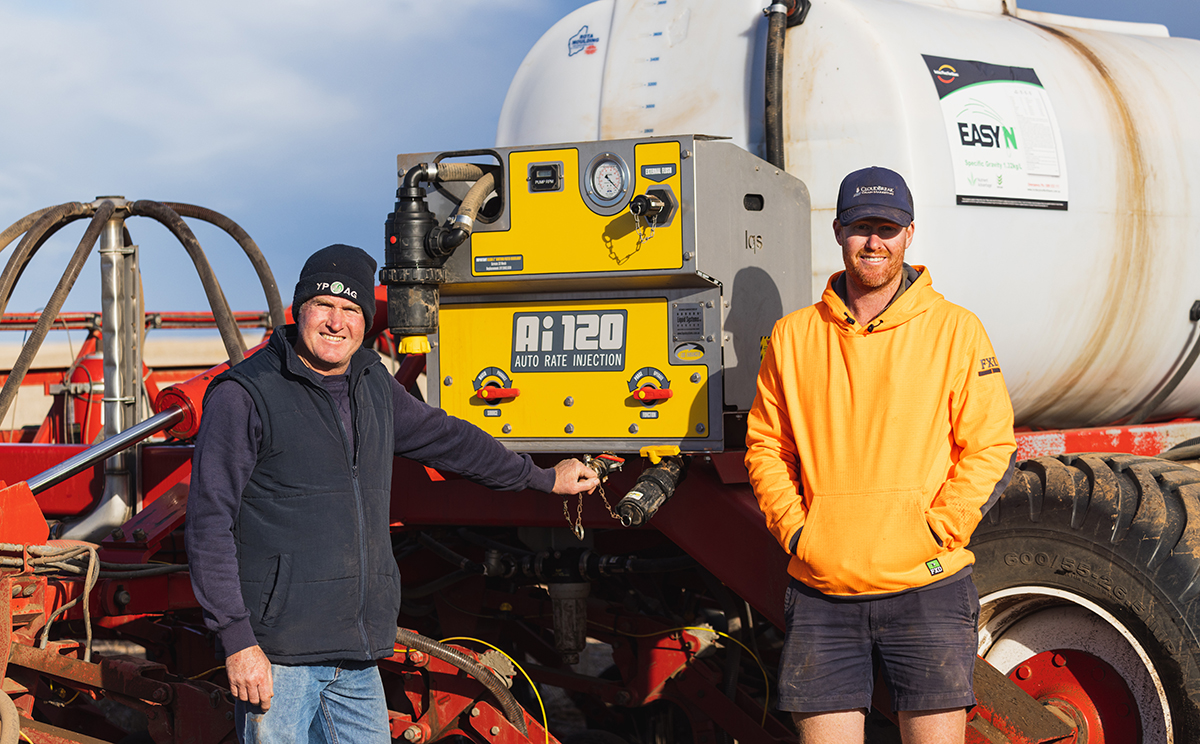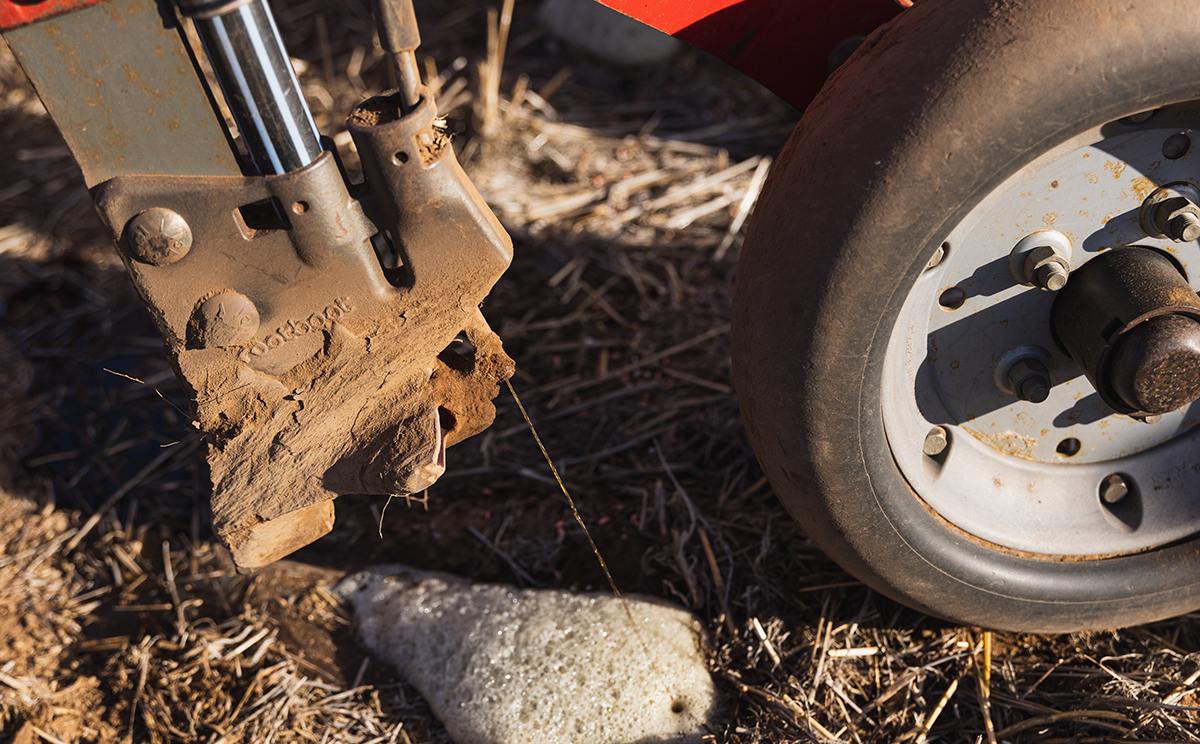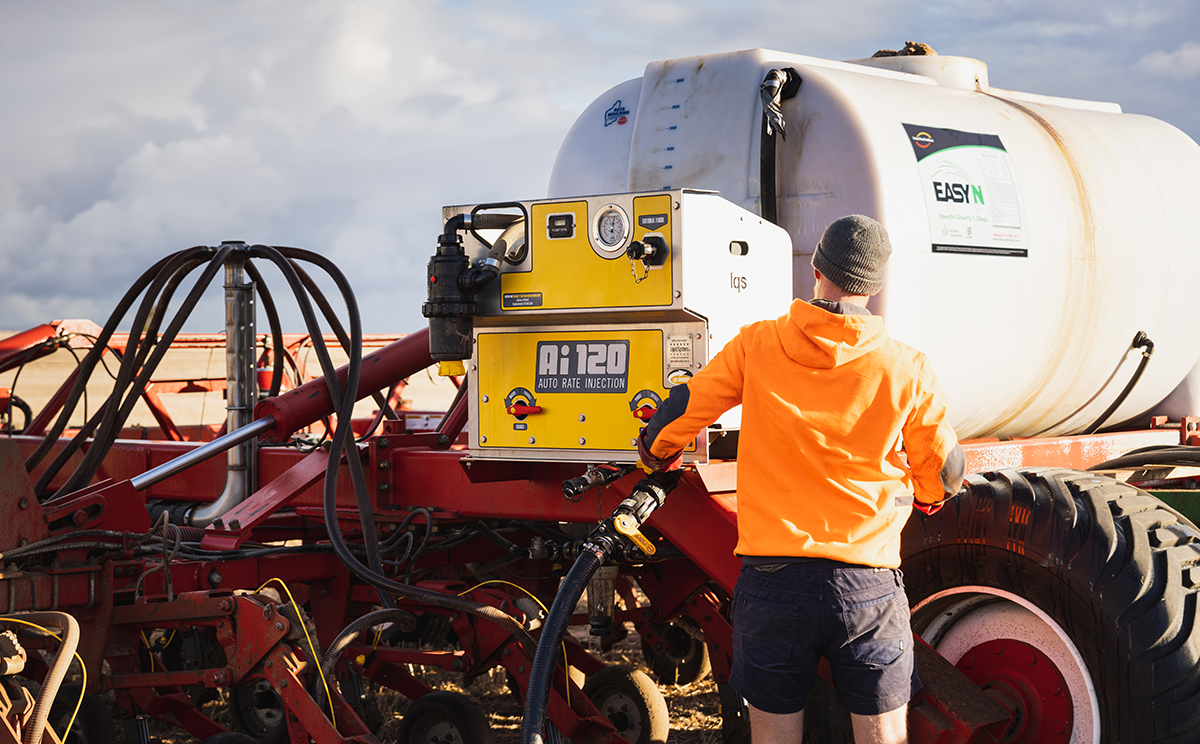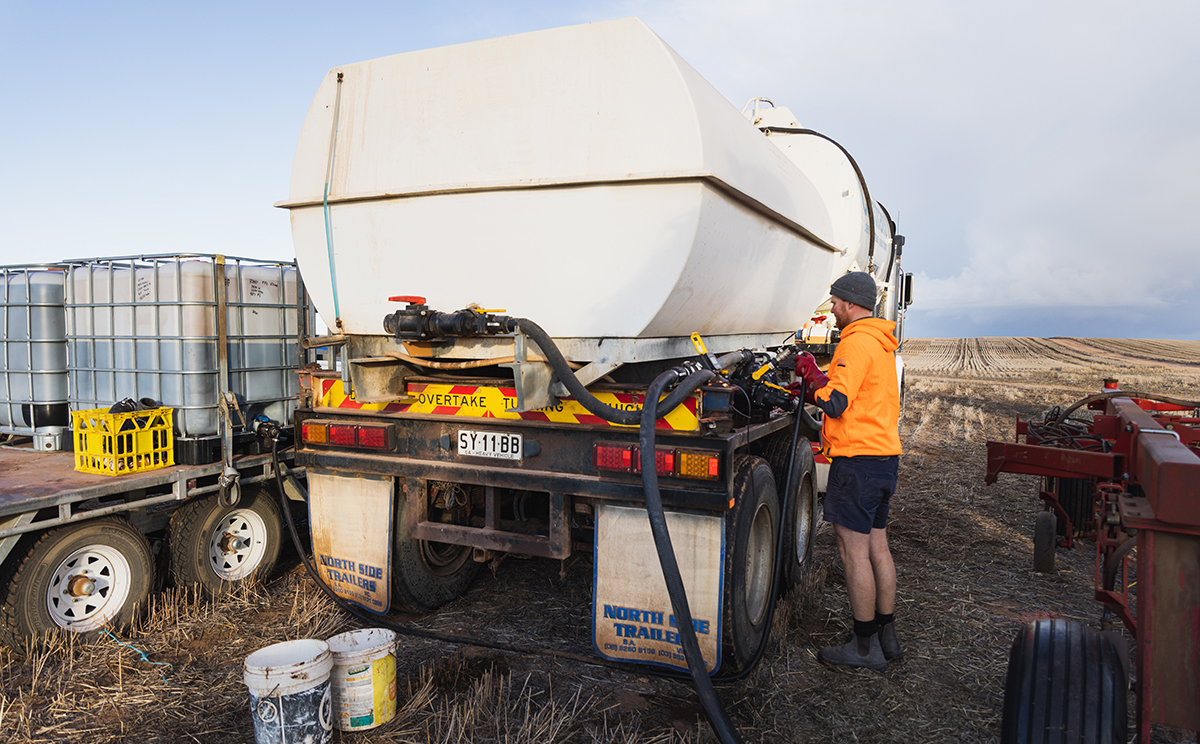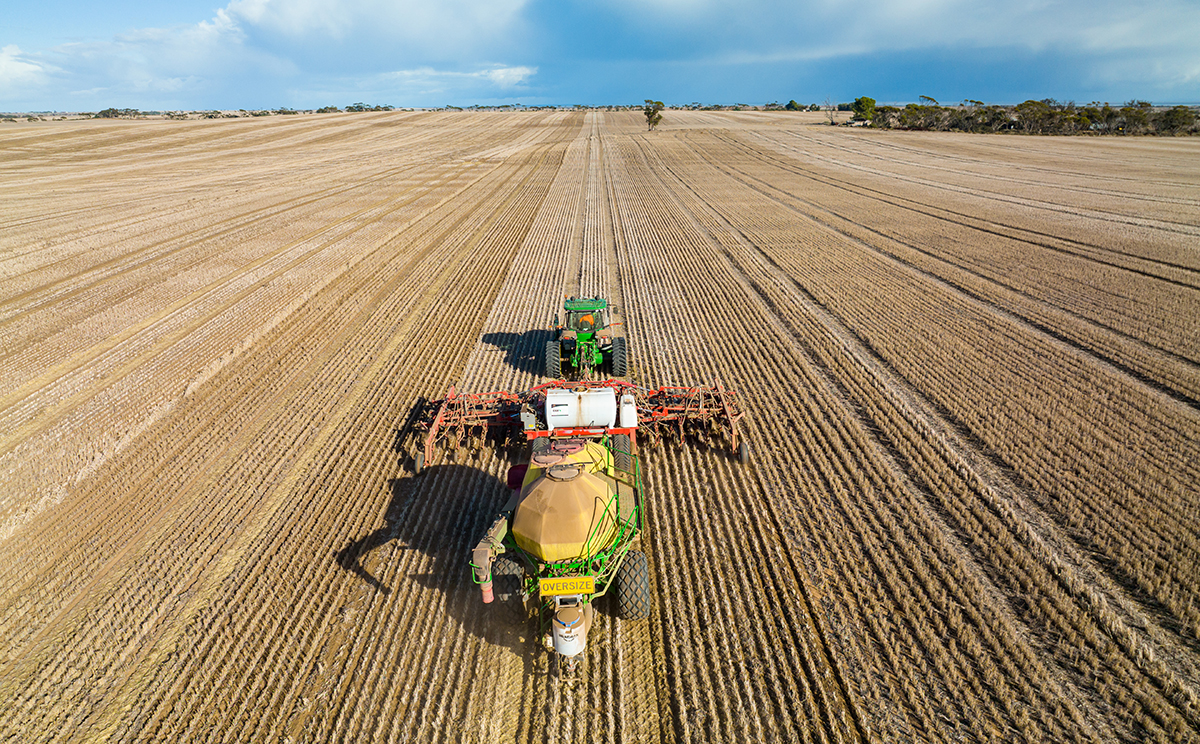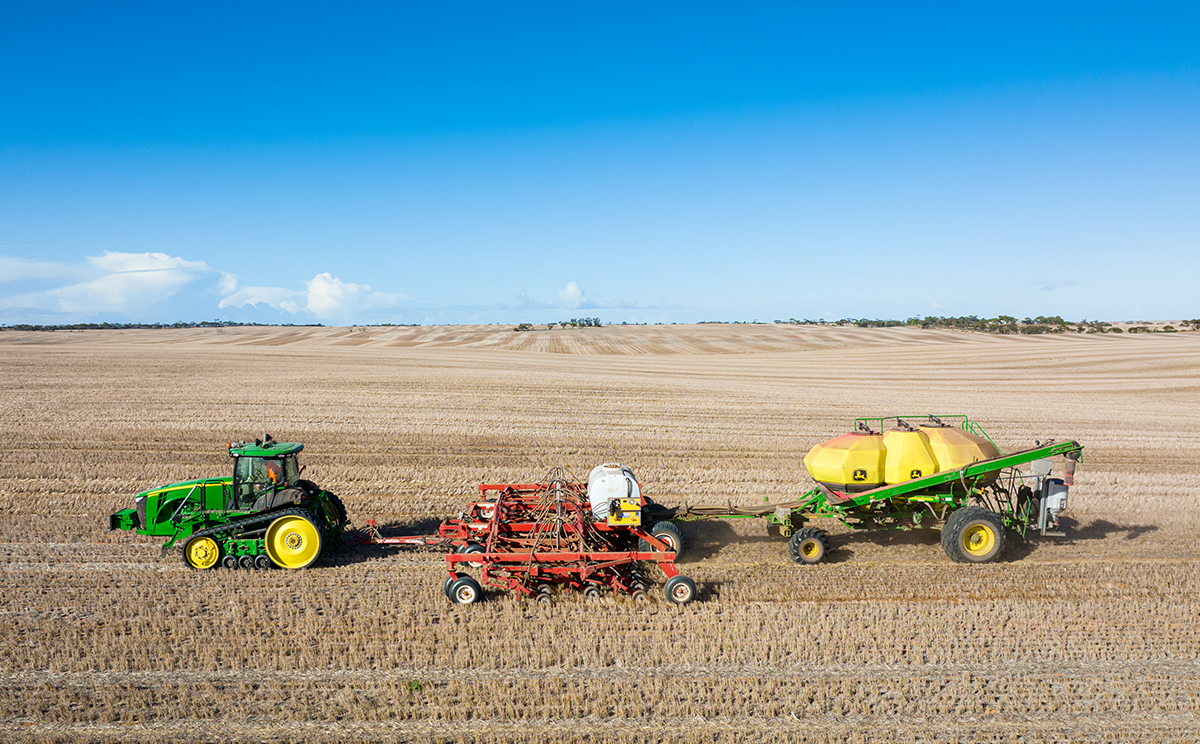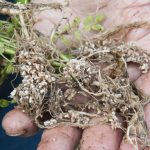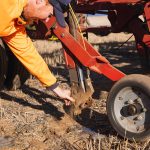Liquid switch makes a difference!
Liquid fertilisers are now an integral part of Yorke Peninsula grain growers, Tim and Peter Edwards cropping enterprise.
Since investing in planting equipment to apply liquid fertilisers in 2019, they’ve seen better early establishment, thicker canopies, healthier crops, and improved yields.
Tim and his father Peter grow wheat, barley, and lentils on 2,400 hectares of sandy country near Port Broughton.
| ABOUT |
|---|
- WHO: Tim and his father Peter Edwards
- WHERE: Port Broughton, Yorke Peninsula, SA
- CROP: 2,400 hectares of wheat, barley and lentils
- INPUTS: EASY N liquid nitrogen, MAP, Gran-Am, micronutrients, trace elements and Flutriafol where needed.
- EQUIPMENT: Liquid Systems (SA) – LQS-AI120 Module – LQS-ASST3 LQS-AT5F x 43 outlets
| KEY OUTCOMES OF GOING TO A LIQUID SYSTEM |
|---|
- Applying a greater range of inputs upfront at seeding and higher rates of nitrogen
- Stronger early crop establishment, thicker canopies and greater yield gains
- The flexibility to buy nitrogen when prices are favourable and store on farm
In 2016, Peter started deep-ripping soils to overcome subsoil constraints. This allowed plant roots to grow faster and deeper and better to access subsoil moisture and nutrients for higher yield potential.
Although this showed immediate and impressive results in crop performance, in the following seasons they often saw a nutrient ‘hangover’ which required higher macro and micronutrient inputs to maintain crop yields.
A new system was also needed to minimise the ongoing compaction of their newly deep ripped soils. After discussions with their agronomist, Chris Davey from YP AG, they made the switch to liquids at seeding and haven’t looked back.
“We sat down with Chris and said that we were thinking of going to a parallelogram seeder and controlled traffic system and also a Liquid System because we feel we’re upsetting some of the nutrients in the topsoil as we deep rip, and he agreed,” Tim said.
They purchased a John Deere RT machine on three-metre centres and bought a second-hand John Deere 1910 Air Cart. They also picked up a demo model Morris C2 which was already rigged for liquids with an LQS Stacker kit. The 12-metre bar was re-engineered to place the wheels at three-metre centres and increase the strength of the frame to carry a 4000 litre liquids tank.
The AI 120 pump and control module has been fantastic, it hasn’t missed a beat.
The only new piece of equipment they bought was a Liquid Systems (SA) LQS AI120 pump and control module for liquid application.
“The AI 120 pump and control module has been fantastic, it hasn’t missed a beat,” he said. “Everyone I know who uses liquids uses Liquid Systems gear – they’ve been well made and no one seems to have any trouble with them.”
Nutrients set potential
Now after five years of using liquids and plenty of trial and error, Tim says they have their system pretty right and they know what works.
Their fertiliser program now includes 70 kg/ha of MAP and 30 kg/ha of Gran-Am applied with the seed in a 100 mm wide root boot trench and 25 to 30 kg/ha of EASY N with a trace element mix applied in a stream 50 mm below the seed line.
The fertiliser program is fine-tuned each season over three planning sessions in late spring, summer and after soil testing in March.
“Our Liquid systems gear gives us a lot more flexibility in what we can apply and how we apply it,” Tim explained.
For example, they could apply higher rates of nitrogen upfront because the EASY N liquid nitrogen fertiliser is placed away from the seed line, compared with their previous knife point system.
Our Liquid Systems gear gives us a lot more flexibility in what we can apply and how we apply it.
“Since we’ve unlocked our soils with deep ripping, we’re finding ways to push harder and achieve higher yields and we can’t do that without nitrogen to set that potential,” he said.
They mix and match with copper, zinc, manganese, iron, cobalt and molybdenum depending on crop needs and add fungicides to the mix where needed.
Although their input program is extensive, and more expensive, the cost has been more than offset by yield gains.
“We noticed significant improvements in strike rates and germination. We’re seeing a lot better establishment and vigour and that’s been valuable for weed competition. “It surprised us how much a nice thick canopy can put pressure on brome grass and ryegrass and the early EASY N has played a large part in that.”
Tim said having higher rates of early nitrogen available to the crop gave them the flexibility to topdress urea or spray EASY N as required, rather than being under pressure to feed the crop early.
There have also been a couple of incidents with missed strips and skipped applications to illustrate the value of their nutrient program.
“In the first year we used the new system we skipped a few rows in the barley, and five or six weeks later, you could really see where the EASY N had gone out and where it hadn’t,” he said.
“The barley was green and gold – where there was no nitrogen applied it was significantly yellower, there wasn’t as much biomass, but where the liquid fertiliser was applied it was fantastic,” he said.
Another situation was a liquid trace element brew to no liquid comparison in a lentil crop, resulting in a 250 kg/ha yield increase.
Even when they can’t point to a specific change in yields, Tim says setting up good crop health early is giving their crops the best opportunity to perform.
“The most rewarding thing is seeing all our crop yields trending the right way because we’re getting all those one-percenters right,” he said.
On farm tanks add flexibility
The addition of two 30,000 litre tanks on farm, has given Tim and Peter greater scope to pre-purchase EASY N at favourable prices.
He said the flexibility of being able to buy nitrogen at the right point in the price cycle and store it on farm from season to season was a major bonus and has proven a useful buffer against market volatility.
“The savings we have achieved have more than paid for the investment in the tanks. Having your fertiliser on farm and being able to apply it when you see fit is invaluable,” he said.
Switching to liquids has not been all smooth sailing; Tim said they trialled many different things and ran into a few compatibility problems.
“We tried to do too much in the first year. With so many neat products in the mix and when trying to add a high rate of nitrogen, we can run into compatibility issues,” he said.
“Now we plan our liquid mixes and get them tested in the lab before the season, it’s a cost I’m happy to pay so I don’t have to unblock liquid tubes at two in the morning, “ Tim said.
“Products settle overnight, there’s temperature changes, the agitation changes with different amounts in the tank. We’ve been stung a few times.”
Tim said increasing the water rate was the answer. “As little as 5 L/ha of water in the mix can make a big difference,” he said.
He recommended growers considering using liquid fertilisers to stay flexible and be open to adjusting rates.
“There’s a lot of pressure at seeding time to ‘go, go, go’ and get the crop in, but we find that taking time to mix our liquids and get that tank mix right is worth it for the end result, even if we have to spend a little longer in the paddock,” he said.
Despite some initial hurdles, Tim and Peter are sticking with their liquid seeding system and plan to add a second tank and twin tank pump system with a spike tank in 2025.
“It will mean we can apply a wetter and increase our UAN and potentially try out some different products such as liquid sulphur.
Get a Quote
"*" indicates required fields

